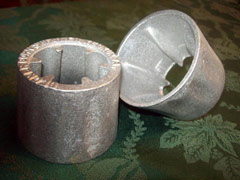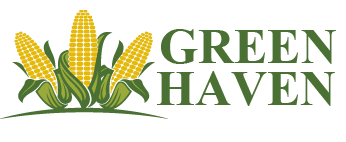You don’t have to be radical about corn and use it for a Christmas tree like the Emo family in order to save seed. If you are willing to put the time and effort in to it, you can save your own seed. It does take some time and effort but most things that are worth while do.
“Corn is monecious. It produces separate male and female flowers on each plant. It is primarily pollinated by wind. Male flowers are the tassels on the top of corn stalks that produce the pollen and the female flowers are pollinated via the silk emerging from each ear.”

Look at the whole plant to make your selections. Pick out the best performing plants. Select from different locations in the field not just where conditions are perfect. When there is adversity like weed pressure, density, dry or poor soil conditions, you notice the plants that are excelling. That’s when faster genetic progress is made. When conditions are perfect it is more difficult to notice the hardier stuff.
Spend the effort to at least save ears from two hundred plants. Even if you’re only growing only a small plot mix your composite sample and pull from there. The reason for saving at least two hundred ears is to maintain the genetic diversity of the variety. What we are trying to avoid here is inbreeding depression. Just like line breeding cattle, you can get away with some similar genetics but you must use caution. Often you will hear the old timers say that they would go to the neighbors to get new seed every now and then because their variety had fizzled. We believe this is what has happened to many of the old open pollinated corn varieties out there. If they aren’t kept well (large enough gene pool) they will start to go down hill. We believe if you do a varital cross of two open pollinated corn varieties (not of two inbreds which would form a hybrid) and you get some vigor, you had some inbreeding depression occurring in that old open pollinated variety. Bottom-line; take the time to save at least two hundred ears from a population.
Mountain of Corn

One simple way to do a varietal cross, with a four row planter is to put variety A in the two out side planting box and put variety B in the inside two planting box. Plant back and forth. Pull the tassels on variety A. The grain produced from Variety B plants are still variety B. The grain produced from variety A plants will be a successful cross. Now make selections.
Dry your selections on the ear before you shell. Keeping air moving around the ears is important. Relative humidity, moving air, and heat effect drying. One simple method to dry selections is in mesh type onion bags. Do not use woven Polly bags, because they don’t breathe. If you hang the mesh bags air can circulate and it makes it a little more difficult for the mice.
In order to rough size your seed, you can break or shell off the ends of the ears and save the middle which would likely be the medium flats. We offer a little hand Sheller that works well for this.
If you have a plate planter and unsized seed, hold your plate up against something flat. Use the smallest round plate you can get the biggest seed to drop through. This will probably be a medium or large round plate. You may have to set your sprockets to a lower setting to account for double drops. Refer to planting tips guide to quick calibrate your planter.
It’s made of Cast aluminum and measures 2 1/8″ high. One end measures 2 7/16″ in diameter and the other end tapers up to – 2 13/16″ in diameter. There are 6 rounded teeth on the inside, which starting from the bottom, taper up from smooth to 1/4″. This is not an antique, so don’t be afraid to use this neat little tool. Just insert an ear of corn and turn the Sheller. This tool is great for those saving their own open pollinated corn seed and only need a few bushel. If you need sized seed, you can shell off the large round kernels at the butt of the ear and the small kernels at the tip. This tool allows you to gently shell of the medium flats separately. This way you can shell and size, your open pollinated corn seed with one inexpensive tool.
Hand Held Corn Sheller

For anyone interested in garden seed saving and breeding other than corn. Contact Teri Ferrin from Organic Seed Partners at 315-787-2396 or teri.ferrin@ars.usda.gov for a FREE Organic Seed Partnerships garden seed saving and breeding instructional DVD.
